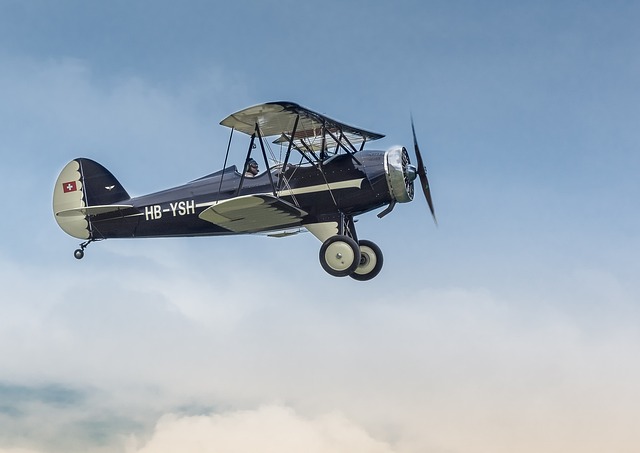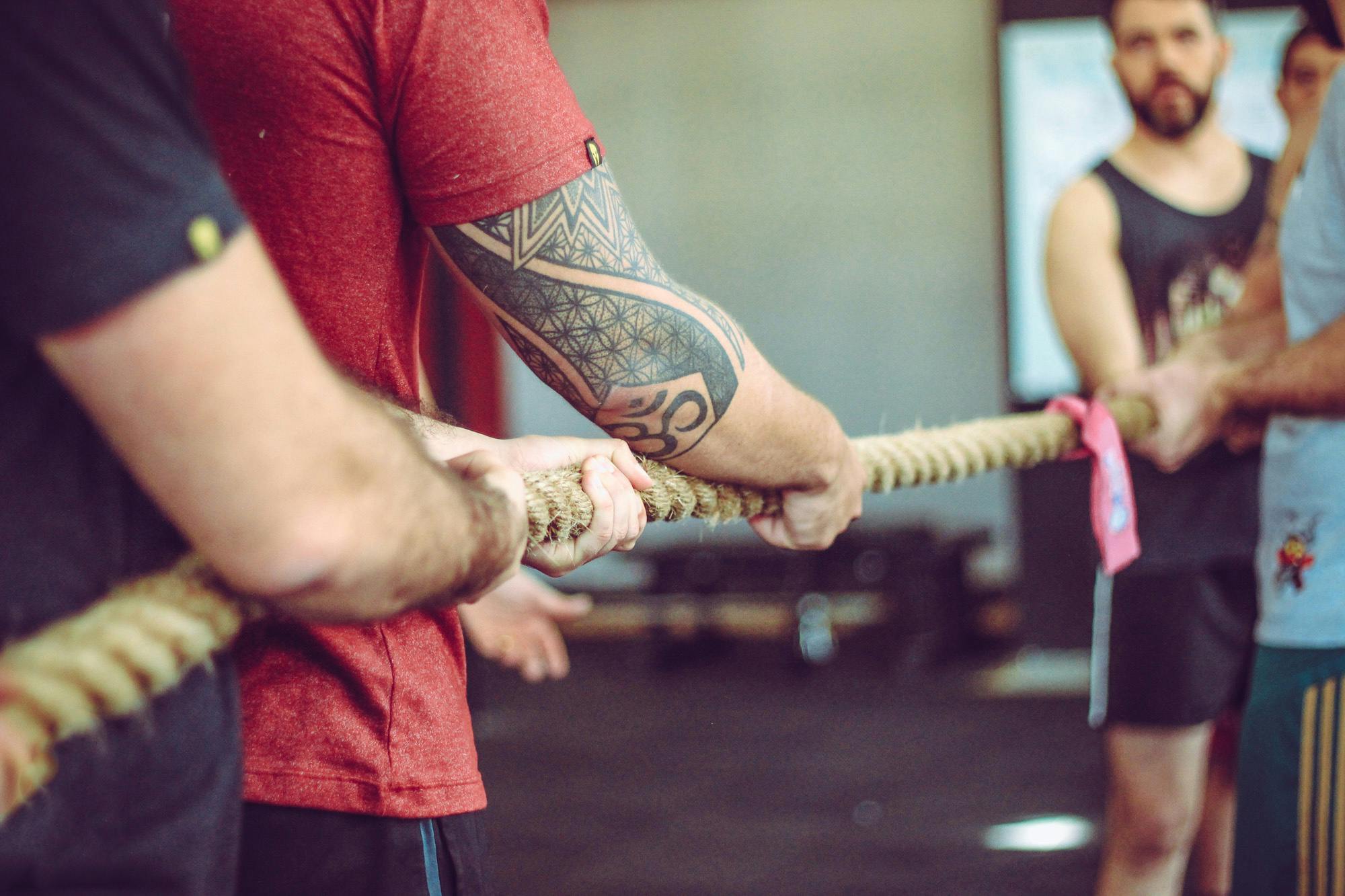Tethered to Triumph: The Soaring World of Gliding
Soaring through the sky without an engine, glider pilots harness nature's power to achieve remarkable feats of flight. This silent sport combines precision, strategy, and an intimate understanding of atmospheric forces. As we delve into the world of gliding, we'll explore its rich history, cutting-edge techniques, and the unique challenges faced by those who dance with the wind.

The Genesis of Gliding
The dream of unpowered flight has captivated humanity for centuries. Long before the Wright brothers took to the skies, pioneers were experimenting with ways to soar like birds. The roots of modern gliding can be traced back to the late 19th century, when visionaries like Otto Lilienthal conducted extensive research on wing design and aerodynamics.
Lilienthal’s work laid the foundation for the Wright brothers’ success, as they initially focused on gliders before adding power to their aircraft. In the aftermath of World War I, gliding experienced a surge in popularity, particularly in Germany. The Treaty of Versailles had placed strict limitations on powered aircraft, inadvertently spurring innovation in engineless flight.
During this period, key advancements were made in glider design, including the development of more efficient wing profiles and the introduction of enclosed cockpits. The sport began to take shape, with the first gliding competitions held in the 1920s. These early contests not only showcased the pilots’ skills but also drove rapid improvements in glider technology and flying techniques.
The Physics of Soaring
At its core, gliding is a dance with gravity and air currents. Unlike powered aircraft, gliders rely entirely on natural phenomena to stay aloft and cover vast distances. Understanding the physics behind this seemingly magical feat is crucial to appreciating the sport’s complexity and the skill required to excel in it.
The primary principle at work is the exchange of altitude for forward motion. As a glider descends, it converts potential energy into kinetic energy, allowing it to maintain flight. However, the true art of gliding lies in finding ways to gain altitude without an engine. This is where thermals, ridge lift, and wave lift come into play.
Thermals are columns of rising warm air that glider pilots can use to gain height. By circling within these invisible elevators, pilots can climb thousands of feet before gliding to the next source of lift. Ridge lift occurs when wind is deflected upwards by hills or mountains, creating a band of rising air that gliders can ride for extended periods. Wave lift, perhaps the most spectacular form, is created when strong winds flow over mountain ranges, generating massive standing waves in the atmosphere that can propel gliders to altitudes rivaling those of commercial airliners.
Modern Glider Design and Technology
Today’s gliders are marvels of aeronautical engineering, far removed from the primitive wooden frames of early models. Advanced composites like carbon fiber and fiberglass have revolutionized glider construction, allowing for incredibly strong yet lightweight airframes. This has resulted in gliders with extraordinary performance capabilities, able to achieve glide ratios exceeding 60:1 – meaning they can travel 60 kilometers forward for every kilometer of altitude lost.
The sleek, elongated wings of modern gliders are designed to maximize lift while minimizing drag. Many feature sophisticated control surfaces, including flaps and spoilers, that allow pilots to fine-tune their aircraft’s performance for different flight phases. Water ballast systems are common in high-performance gliders, enabling pilots to optimize their wing loading for varying weather conditions.
Cockpit technology has also advanced significantly. While the principle of unpowered flight remains unchanged, pilots now have access to sophisticated instrumentation. GPS-enabled flight computers provide real-time information on position, speed, and nearby sources of lift. Variometers, which measure the rate of climb or descent, have become increasingly sensitive, helping pilots detect even the slightest updrafts.
Perhaps one of the most significant technological advancements in recent years has been the development of electric sustainer engines. These small, retractable power plants don’t turn a glider into a powered aircraft but provide a safety net, allowing pilots to generate enough thrust to return to an airport if they can’t find sufficient lift to complete their flight.
Competitive Gliding: Strategy in the Sky
Gliding competitions push pilots and their aircraft to the limits of performance. These events, held at regional, national, and international levels, test a wide range of skills including speed, distance, and tactical decision-making. The World Gliding Championships, held biennially, represent the pinnacle of the sport, attracting the best pilots from around the globe.
Competitive gliding typically involves tasks that require pilots to navigate a predetermined course as quickly as possible. These courses can span hundreds of kilometers and take several hours to complete. The strategic element comes into play as pilots must constantly make decisions about route selection, altitude management, and when to push for speed versus when to play it safe.
Weather interpretation is a crucial skill in competitive gliding. Pilots must be adept at reading the sky, identifying areas of lift, and avoiding sink. This involves a deep understanding of meteorology, from recognizing cloud formations that indicate thermal activity to predicting the development of weather systems that could impact flight conditions.
Team flying has become an increasingly important aspect of gliding competitions. While each pilot flies their own glider, teams work together to share information about lift locations and optimize their collective performance. This collaboration adds another layer of strategy to an already complex sport.
The Pilot’s Perspective: Mental and Physical Challenges
Gliding demands a unique combination of physical endurance and mental acuity. Flights can last for hours, with pilots seated in a confined space, constantly processing information and making split-second decisions. The physical toll of long flights is significant, with dehydration and fatigue being common challenges.
Mentally, glider pilots must maintain intense focus throughout their flight. They’re constantly calculating glide angles, assessing weather conditions, and planning their next move. The ability to think several steps ahead, much like in chess, is crucial for success. Pilots must also be prepared to handle the psychological pressure of competitions and the potential risks associated with unpowered flight.
Situational awareness is paramount in gliding. Pilots must be acutely aware of their surroundings, including other aircraft, terrain features, and changing weather conditions. This requires a constant mental juggling act, balancing immediate flight control with broader strategic considerations.
The sport also demands a high level of self-reliance. Once airborne, a glider pilot is largely on their own, making critical decisions that directly impact their safety and performance. This aspect of the sport attracts individuals who thrive on autonomy and problem-solving.
Training and Progression in Gliding
Becoming a proficient glider pilot involves a structured training program that covers both theoretical knowledge and practical skills. Aspiring pilots typically begin with ground school, where they learn about aerodynamics, meteorology, air law, and navigation. This theoretical foundation is crucial for understanding the principles that govern unpowered flight.
Practical training starts with dual instruction flights, where a student flies with an experienced instructor. These flights focus on basic handling skills, including takeoffs (usually via aerotow or winch launch), landing, and maintaining steady flight. As students progress, they learn more advanced techniques such as thermal soaring and cross-country navigation.
Solo flight is a significant milestone in a glider pilot’s journey. This typically occurs after 50-100 training flights, depending on the individual’s progress. After soloing, pilots continue to build experience and skills, gradually taking on longer and more challenging flights.
Many gliding clubs and schools offer structured programs that guide pilots from their first flight to advanced certifications. These programs often include badges or awards that recognize achievements in distance, altitude, and duration of flights. The FAI (Fédération Aéronautique Internationale) Gold Badge, for example, requires a flight of at least 300 kilometers, a gain of altitude of at least 3,000 meters, and a duration flight of at least 5 hours.
Safety Considerations in Gliding
While gliding is generally considered a safe sport when proper precautions are taken, it’s not without risks. Safety is paramount in the gliding community, with extensive protocols and training dedicated to minimizing potential hazards.
Pre-flight checks are a critical part of gliding safety. Pilots meticulously inspect their aircraft before each flight, checking control surfaces, connections, and overall structural integrity. Weather briefings are also essential, as gliders are more susceptible to changing atmospheric conditions than powered aircraft.
In-flight safety measures include maintaining a safe altitude, staying within gliding distance of suitable landing areas, and being prepared for off-field landings if necessary. Many gliders are equipped with emergency parachutes for the entire aircraft, providing an additional layer of safety in extreme situations.
Collision avoidance is another key safety concern, particularly in busy gliding areas or during competitions. Pilots are trained to maintain a constant lookout and follow strict right-of-way rules. Some gliders are now equipped with electronic collision avoidance systems, although visual scanning remains the primary method of traffic detection.
Training in emergency procedures is an integral part of glider pilot education. This includes handling equipment failures, dealing with adverse weather conditions, and executing off-field landings. Regular practice of these skills helps ensure that pilots can respond effectively in challenging situations.
The Global Gliding Community
Gliding is a sport that fosters a strong sense of community. Gliding clubs serve as hubs for enthusiasts, providing access to aircraft, training, and a social network of like-minded individuals. These clubs range from small, grassroots organizations to large establishments with extensive facilities and fleets of gliders.
International organizations play a crucial role in promoting and regulating the sport. The International Gliding Commission (IGC), a part of the FAI, oversees international competitions and record-keeping. National gliding associations in various countries work to develop the sport locally, often in collaboration with aviation authorities to ensure safe and responsible practices.
The gliding community is known for its spirit of mentorship and knowledge sharing. Experienced pilots often take on roles as instructors or coaches, passing on their expertise to the next generation of glider pilots. This culture of mutual support and continuous learning is a hallmark of the sport.
Environmental Considerations and Sustainability
Gliding is often touted as one of the most environmentally friendly forms of aviation. With no engine emissions during flight, gliders have a minimal carbon footprint. However, the sport is not entirely without environmental impact, particularly when considering the methods used to launch gliders.
Many gliding operations use powered aircraft for towing gliders to launch altitude. There’s a growing interest in developing more sustainable launch methods, including electric tow planes and more efficient winch systems. Some gliding clubs have invested in solar power to offset the energy used in their ground operations.
The sport’s reliance on natural phenomena has made the gliding community particularly attuned to environmental issues. Many glider pilots become keen observers of weather patterns and climate trends, contributing valuable data to meteorological research. This connection to the atmosphere has led some in the gliding community to become advocates for environmental conservation and climate action.
Technological Innovations on the Horizon
The future of gliding looks bright, with several technological innovations poised to reshape the sport. One area of development is in materials science, with researchers exploring new composites that could make gliders even lighter and more efficient.
Advances in battery technology are opening up new possibilities for electric sustainer engines, potentially increasing their range and reliability. This could expand the capabilities of gliders, allowing for longer flights and increased safety margins.
Artificial intelligence and machine learning are beginning to find applications in gliding. These technologies could be used to optimize flight paths, predict thermal locations with greater accuracy, and even assist in pilot training through advanced simulators.
The Therapeutic Value of Gliding
Beyond its sporting aspects, gliding has been recognized for its potential therapeutic benefits. The combination of focus, skill development, and connection with nature inherent in gliding can have positive effects on mental health and personal growth.
Several programs around the world use gliding as a means of rehabilitation and therapy. For example, initiatives for wounded veterans have found that the challenges and achievements in gliding can aid in physical and psychological recovery. The sense of freedom and accomplishment that comes with soaring can be particularly empowering for individuals dealing with physical disabilities or mental health issues.
The meditative aspect of gliding, where pilots must be fully present and in tune with their environment, has drawn comparisons to mindfulness practices. Some practitioners argue that the intense focus required in gliding can serve as a form of active meditation, providing stress relief and improving overall well-being.
Gliding in Popular Culture and Media
While not as prominent in popular culture as some other aviation sports, gliding has made its mark in various forms of media. Several documentaries have captured the beauty and excitement of the sport, showcasing breathtaking aerial footage and delving into the technical and strategic aspects of unpowered flight.
In literature, gliding has inspired both non-fiction accounts of record-breaking flights and fictional narratives that use the sport as a backdrop for broader themes. These works often explore the philosophical aspects of gliding, drawing parallels between the physical act of soaring and personal or spiritual journeys.
The visual appeal of gliding has also made it a subject for artists and photographers. Images of sleek gliders set against dramatic cloudscapes or rugged mountain terrain have become iconic representations of the sport, capturing its essence of freedom and harmony with nature.
The Economic Impact of Gliding
While not typically associated with large economic impacts, the gliding industry does contribute significantly to local economies, particularly in areas with popular gliding sites. Gliding clubs and schools create employment opportunities for instructors, maintenance technicians, and support staff.
The manufacture of gliders and related equipment is a niche but important industry, with several companies specializing in high-performance sailplanes and components. These businesses often drive innovation in aerospace materials and design, with potential applications beyond the sport itself.
Gliding events, especially large international competitions, can bring substantial tourism revenue to host regions. Participants, support crews, and spectators contribute to local economies through accommodation, dining, and other tourism activities.
Cross-Disciplinary Applications of Gliding Principles
The principles and technologies developed for gliding have found applications in various other fields. The study of bird flight, crucial to understanding soaring techniques, has influenced designs in aviation and even in robotics, where researchers are developing bird-inspired drones.
Meteorological research has benefited greatly from the gliding community. The detailed observations of atmospheric conditions made by glider pilots have contributed to our understanding of micro-climates and thermal patterns. Some weather forecasting models incorporate data gathered from gliding flights to improve their accuracy.
In the realm of renewable energy, insights from gliding have informed the design of wind turbines. The aerodynamic principles that allow gliders to extract energy from moving air are similar to those used in wind power generation.
Challenges and Opportunities for the Future of Gliding
Like many traditional sports, gliding faces challenges in attracting younger participants. The time commitment required to become proficient and the initial costs can be deterrents. However, efforts are being made to make the sport more accessible, including scholarship programs and initiatives to introduce gliding in schools.
Airspace restrictions present another ongoing challenge for the gliding community. As air traffic increases globally, glider pilots must navigate more complex airspace regulations. Advocacy efforts by gliding organizations aim to ensure that the needs of the sport are considered in airspace management decisions.
Climate change poses both challenges and opportunities for gliding. While changing weather patterns may affect traditional gliding sites and techniques, the increased focus on sustainable practices could highlight gliding as an environmentally friendly aviation activity.
The integration of new technologies, particularly in the realm of electric propulsion and advanced avionics, presents exciting opportunities for the sport. These innovations could make gliding safer, more accessible, and potentially open up new forms of competition.
Conclusion: The Enduring Appeal of Silent Flight
As we’ve explored the multifaceted world of gliding, it becomes clear why this sport continues to captivate enthusiasts around the globe. From its rich history and the complex physics that make it possible, to the cutting-edge technology shaping its future, gliding represents a unique intersection of science, skill, and natural wonder.
The challenges faced by glider pilots – reading the sky, making split-second decisions, and pushing the boundaries of unpowered flight – offer a form of engagement that is both intellectually stimulating and deeply rewarding. The sport’s emphasis on environmental attunement and sustainability aligns well with growing global concerns about climate change and resource conservation.
As gliding continues to evolve, incorporating new technologies and attracting diverse participants, it maintains its core essence: the pure joy of soaring freely on invisible currents of air. Whether pursued competitively or recreationally, gliding offers a profound connection with the natural world and a unique perspective on the art of flight.
In an age of constant connectivity and sensory overload, the serene challenge of gliding provides a rare opportunity for focus, self-reliance, and harmony with nature. As long as humans dream of flight in its purest form, the allure of gliding will endure, inspiring new generations to take to the skies and experience the silent triumph of soaring.





